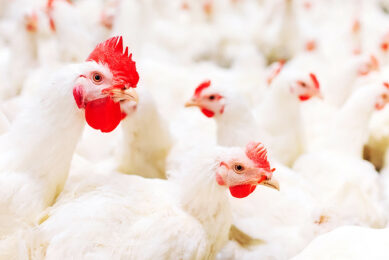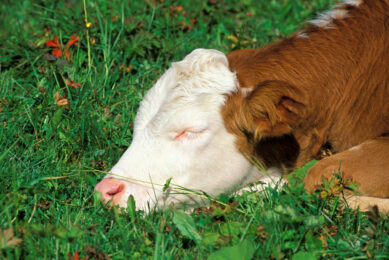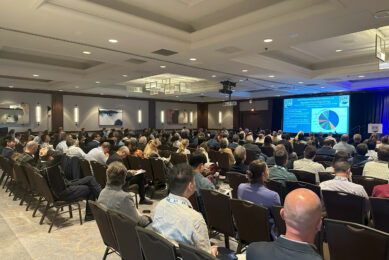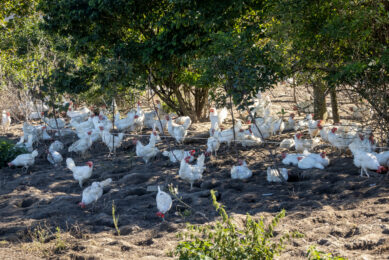Sensory additives keep heat stress under control
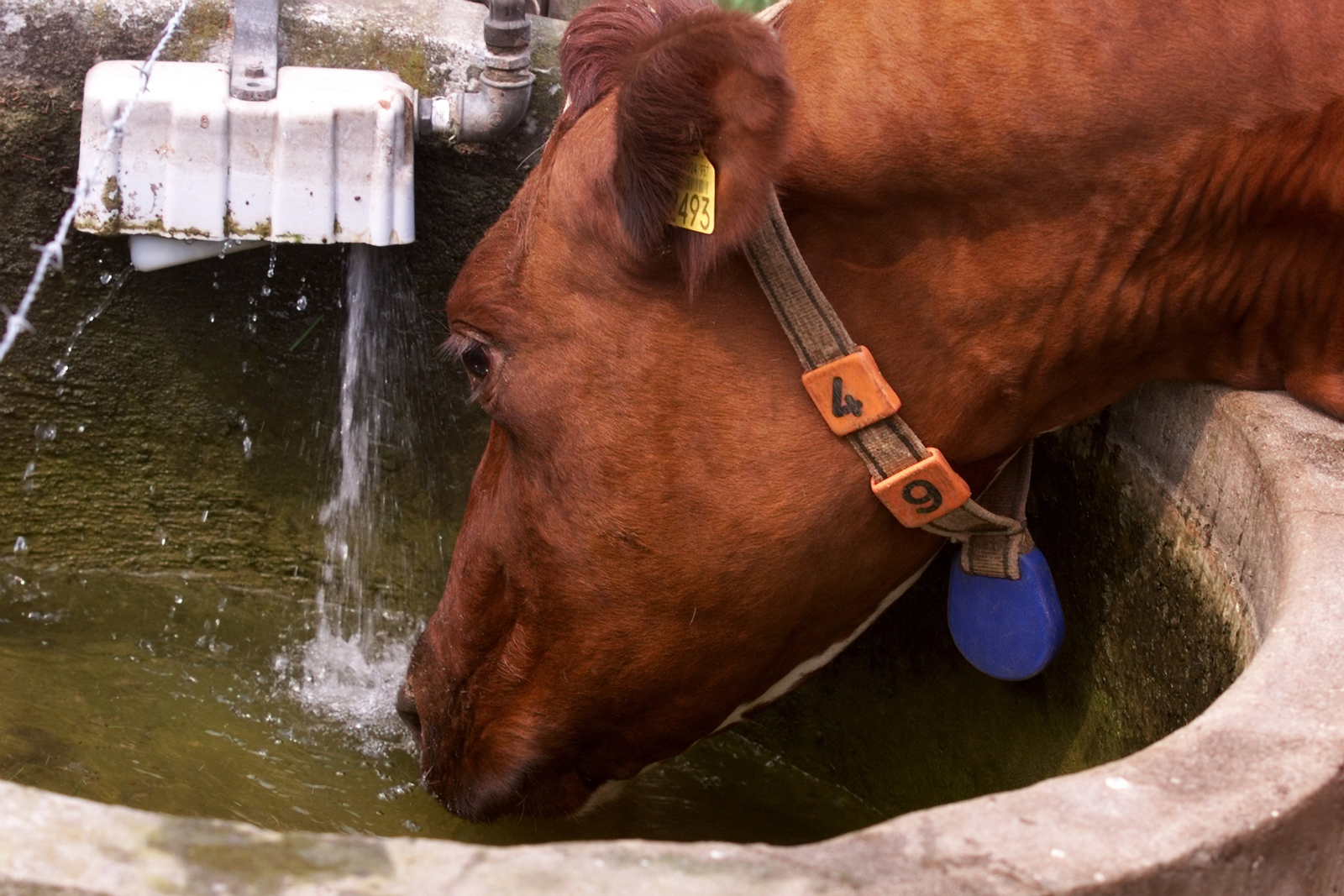
Dairy farmers around the world face heat stress as one of the main challenges in high levels of milk ?production while keeping cows healthy. Keeping the feed intake on the right level is key, and sensory additives can help achieve this.
Heat stress negatively impacts a variety of productive traits in dairy cattle including milk yield, growth, and reproduction. Advances in environmental management (i.e., cooling systems and barn construction) have alleviated some of the negative impact that thermal stress has on animal performance, but production still decreases during the summer months. In many regions of the world, milk production is based in feeding systems with total mixed rations (TMR) composed by a mix of grains and forages.
Total mixed rations are designed to supply a well-balanced nutrient diet and a homogenous mixture of feed ingredients. However, cowsʹ selection (sorting) of grain against forage may lead to inefficiencies in nutrient utilisation and digestive problems such as sub-acute ruminal acidosis (SARA). Even when cows consume a TMR in a consistent manner and cowsʹ sorting is low, there is always variation and differences in the ration formulated by the nutritionist due to nutrient variability, mixing equipment, and ingredient mixing order.
Top ranked challenges for farmers
A simplified daily time budget for lactating dairy cattle housed or in confinement: 1) eating: 3 to 5 hours/day (9 to 14 meals/day), 2) resting (lying): 12 to 14 hours/day, 3) social interactions: 2 to 3 hours/day, 4) ruminating: 7 to 10 hours/day (both standing and lying, 5) drinking: 0.5 hours/day, and 6) time spent outside the pen for travel to and from the parlor, milking, and other management practices: 2.5 to 3.5 hours/day. It is clear that, since there are only 24 hours in a day, a management environment that keeps a cow outside the pen for greater than 3.5 hours/day forces the cow to sacrifice some behaviour – inevitably resting or feeding time (Grant, 2011).
The three scenarios described above (heat stress, TMR sorting and variability, and enough resting and feeding time for the cows), are in the top ranked challenges for dairy farmers and dairy consultants (nutritionists, veterinarians, etc.) around the world. Therefore, being able to manage and modulate intake of dairy cows and deeply understand cowsʹ eating behaviour is key. Also very important – the research and development of technologies that allow dairy farmers and dairy consultants to better manage how cows consume their feed. Optimisation of cowsʹ eating behaviour has many potential benefits for the cowsʹ health and profitability of the farmers.
Sensory additives put to the test
Sensory science can be used to solve nutritional challenges such as heat stress of dairy cows. The company Lucta has been active in this field for many years and has been carrying out trials with their sensory additives for cattle (calves and adult dairy cattle). Their product*, a mix of sensory additives from natural compounds with a sweet molasses sensory profile that was developed to: 1) Improve dry matter intake, prevent fee-particle sorting, and increase milk production; and 2) Modulate eating behaviour (higher number of meals), and help stabilise rumen environment. The recommended dose for adult dairy cattle ranges from 15 to 30 g/cow/day and is stable to the process of extrusion and pelleting.
The use of this sensory product for dairy cows under heat stress has been recently reported at the Joint Annual Meeting (JAM) of the American Dairy Science Association (ADSA) and the American Society of Animal Science (ASAS) (Bargo et al., 2014). The objective of the study was to evaluate the effect of the product on dry matter intake (DMI), milk production, and feed conversion efficiency under heat stress conditions.
570 Holstein dairy cows in mid lactation
The study was conducted for five weeks in a commercial dairy farm with 570 Holstein dairy cows in mid lactation (cows averaged 194 days in milk and 34.4 kg/day milk at the beginning of the experiment). Maximum and minimum temperatures averaged 38.9 and 20.4ºC, respectively, during the experiment. Cows were divided in two groups: a control total mixed ration (TMR) or the same TMR supplemented with 30 g/day of sensory additive The TMR (52:48 concentrate: forage; 18.4% crude protein CP, 29.1% neutral detergent fiber NDF, 42.1% non-fibre carbohydrates NFC) was offered twice daily to the cows and the sensory additive was top-dressed at each feeding.
The results show that DMI and milk production increased (P < 0.05) with the sensory additive: DMI increased + 1.2 kg/day (23.6 vs. 24.8 kg/day; 0.16 SE) and cows fed the TMR with the sensory additive produced + 2 kg/day more milk with similar feed conversion efficiency (1.42 kg milk/kg DMI; P > 0.05) (Figure 1a and 1b). The positive milk response to the sensory additive in the heat stress study is in agreement with a previous study conducted at the University of Delaware in the US with high producing dairy cows in early lactation. This study evaluated for 10 weeks, the effect of the sensory additive as a technology to improve forage palatability on DMI, milk production and composition, and rumen pH of 28 lactating Holstein cows (7 first lactation and 21 second or higher lactation cows averaging 697 kg of body weight, 54 days in milk, and consuming 23 kg/day of dry matter).
Cows were fed a basal TMR comprised of 45% corn silage, 10% alfalfa haylage, and 45% concentrate. For one half of the cows, the forage portion of the diet was treated with the sensory additive that was premixed in water to achieve a dose of 12 ml/day (equivalent to approx. 30 g/day) prior to mixing into the TMR. The remaining half of the cows was fed the same TMR but the forage was mixed with water only. Each treatment had two cows with rumen fistula to measure once weekly the rumen pH (every 30 min for 48 h through in-dwelling probes placed in the rumen of the cows).
Increase in DMI and milk production
The results showed that although for all cows, there were (P > 0.05) differences in DMI and milk production and composition, when data from only multiparous (second or higher lactation) cows were analysed there was a tendency for greater DMI (+ 1.5 kg/day, P < 0.07) and milk production (+ 3.9 kg/day, P < 0.10) for cows fed the TMR with the sensory additive. Besides the production parameters, it was found in this study that cows fed the TMR with the sensory additive had higher (P < 0.01) mean rumen pH (Figure 2) and spent less time (P < 0.05) throughout the day with pH below 5.8 and 5.5 (Figure 3a and 3b).
This US study with high producing dairy cows in early lactation shows that the use of the sensory additive improved the palatability of the forage fraction of the TMR fed to multiparous cows and helped to stabilise the daily pattern of ruminal pH, and increased DMI and milk production. The DMI and milk response to the sensory additive found in the Mexican heat stress study and the US study could have been related to changes in eating behavior (meal size and frequency) and/or positive modulation of hormonal signals associated with the control of feed intake (e.g. ghrelin).
Effect on eating behaviour
A more recent study, conducted with six Holstein dry cows evaluated the effect of the sensory additive on eating behaviour. Cows divided into two pens were randomly assigned to two treatments: control TMR; and same TMR supplemented with the sensory additive at a dose of 15 g/cow/day. The TMR (73:27 concentrate: forage; 14.8 % CP, 47.0% NDF, 1.32 Mcal net energy of lactation/kg) was formulated to provide the nutrient requirements of dry cows following NRC (2001) recommendations. Cows were fed ad libitum through four automatic feeders mounted on scales within each pen, therefore feed consumption and feeding bouts were recorded automatically. Total DMI was not affected (P > 0.05) by treatments (11.4 kg/day ± 0.33 SE) but eating behaviour was affected by the sensory additive.
Cows receiving the sensory additive reduced (P < 0.05) the time dedicated to eat (119 vs. 149 min/day ± SE 7.60) whereas increased (P < 0.05) the eating rate (106.4 vs. 85.3 g/min ± 5.52 SE) compared with the control cows. Neither number of meals (4.3 ± 0.75 SE) nor meal size (2.66 kg/meal ± 0.19 SE) differed (P > 0.05) between treatments (Table 1). These data with dairy cows shows that feeding the sensory additive increased eating rate without affecting total dry matter intake of dry cows. In a more basic science study conducted by Villalba et al. (2011) with lambs, the mode of action of different additives including the sensory additive was evaluated measuring different key short-term intake hormones such as ghrelin.

Also read: Heat Stress Additives
Ghrelin is a 27-amino acid orexigenic endogenous peptide that in ruminants is synthesised in abomasum, small intestine, and rumen. Ghrelin secretion is pulsatile and determines meal initiation because increases before meals and decreases after meals. The positive effect of ghrelin on intake has been described in ruminants including beef cattle and lactating dairy cows. The study of Villalba et al. (2011) reported an increased on ghrelin concentration when the sensory additive was included in the feed of the lambs (Figure 4). This study shows that sensory additives such as the sensory additive played a role in short-term intake of key hormones in ruminants.
Conclusions
The sensory additive described in this article showed to increase DMI and milk production. In addition, it affects eating behaviour of dairy cattle. Studies have shown that the sensory additive increased the number of meals and intake rate in Holstein steers and reduced the eating time but increase the eating rate in dry dairy cows. The inclusion of this type of sensory additives in the diets of dairy cows could have benefits for those cows under common production challenges such as heat stress, cowsʹ diet sorting, and cowsʹ time budget (eating and resting time). Those challenges are the ones that dairy farmers and consultants face on a daily basis around the world.
*ProEfficient™
References are available on request.






